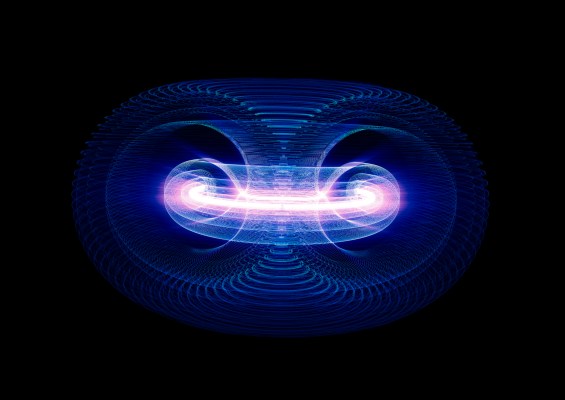The biggest news a couple weeks ago wasn’t another of Elon Musk’s Twitter tantrums, but the announcement that scientists had finally cracked one of fusion power’s biggest challenges — successfully getting more energy out of a controlled fusion reaction than they had put in.
Fusion power, which has always seemed like science fiction and just about as plausible, suddenly took a very tangible step toward reality.
That doesn’t mean that anyone is going to hook a fusion power plant up to the grid tomorrow or even in 10 years. But it does give a boost to a field that’s been brimming with confidence of late. A confluence of advances has led to a tidal wave of startups and investments. In the last year alone, investors bet $2.7 billion on fusion startups.
Many of those investments have been part of enormous rounds raising hundreds of millions of dollars in capital. No surprise — fusion power is hard tech, and it’ll take concerted research and developments over many years to bring it to fruition.
But what if you’re an investor who doesn’t have tens of millions in dry powder earmarked for fusion? Thankfully, not all fusion startups are unicorns. There are lots of new companies chasing novel ideas for power plants as well as software companies and suppliers hoping to build the supply chain for what could be a $40 trillion industry, according to Bloomberg Intelligence.
Here are five companies that we’re keeping an eye on.
Avalanche Energy Designs
Fresh out of stealth this year, Avalanche Energy Designs began as a side project for two engineers at Blue Origin, Jeff Bezos’ rocket company. The startup is pursuing a novel approach to fusion called an orbitron, where ions are brought into orbit around a negatively charged cathode and confined by weak magnets. They say it’s not too dissimilar from a microwave (which incidentally can create a very cool plasma using a halved grape).
While most proposed fusion reactors are pretty massive, Avalanche’s design is about the size of a large suitcase. It’ll produce five to 15 kilowatts, or about enough to run a handful of homes — or power small spacecraft, which has apparently sparked the interest of the U.S. Department of Defense. In August, the Seattle-based company disclosed that it had raised $23.3 million of a targeted $40 million Series A.
Type One Energy
A spinout from the University of Wisconsin at Madison, Type One is developing a more conventional design that’s been around for decades but wasn’t possible to implement until recently. Called a stellarator, it looks something like a contorted doughnut wrapped in powerful magnets. Stellarators were first proposed in 1951, but they performed poorly until computers became advanced enough to optimize the shape to prevent plasma loss.
Type One’s design is known as a quasi-helical stellarator, and the company is hoping to maintain breakeven energy for several hours by 2030 and quickly follow that with a second generation that can maintain continuous operations. The Madison-based company currently has a grant through the U.S. Department of Energy’s Advanced Research Projects Agency-Energy.
CTFusion
CTFusion, another Seattle-based company, is working on a spheromak design that uses magnets to corral plasma into a doughnut inside of a confinement chamber that looks like a plump M&M. Spheromaks can potentially be simpler than tokamaks, according to the company, which could lead to lower costs.
The startup is collaborating with fusion researchers at the University of Washington. It’s also a part of the ARPA-E’s fusion portfolio.
Kyoto Fusioneering
Unlike the previous companies, Kyoto Fusioneering isn’t developing its own reactor design but rather focusing on the rest of the widget, what they call the “balance of plant.” That includes how to preheat the plasma before it’s injected into the reactor and how to extract heat from the reaction to turn it into usable power. The latter consists of a blanket that lines the interior of the power core, and it’s made of silicon carbide, a material also used in inverters inside high-power electric vehicles to enable faster charging and power delivery.
The Toyko-based company closed an $11.6 million Series B in February from a range of Japanese venture capital firms. The startup’s “chief fusioneer” is a professor at Kyoto University and once served as Japan’s representative to ITER, the international fusion project.
Princeton Fusion Systems
Princeton Fusion Systems was founded to commercialize the Princeton field-reversed configuration, an experimental setup developed at a national lab run by — you guessed it — Princeton University. A field-reversed configuration holds plasma in a spinning cigar shape using what’s essentially a cylinder of magnets. Cool plasma is then pumped through the cylinder and around the bolus of plasma, drawing heat off it so it can be extracted outside the reaction chamber.
While other startups are also working on reactors with a field-reversed configuration, Princeton Fusion Systems is focused on smaller applications, including those that could fit on a large truck and produce around one to 10 megawatts. By tweaking the design, the company thinks it can also use energy from the fusion reaction to propel a spacecraft.
The startup is also a part of ARPA-E’s fusion program, which has provided $1.1 million in grant funding.
Bright future?
Today’s fusion startups run the gamut from large, well-capitalized companies with billions in the bank to smaller, scrappier teams that are pushing the boundaries with just a few million in funding. That spread suggests that the field remains wide open.
The unicorns might have a better chance at hitting their targets, but fusion science has been as perplexing as it can be inspiring. Smaller startups might flicker out, or they might have a big hit on their hands. It’ll be several years before anyone knows which approach will pan out — if any — and it’s certain to be a wild ride.
